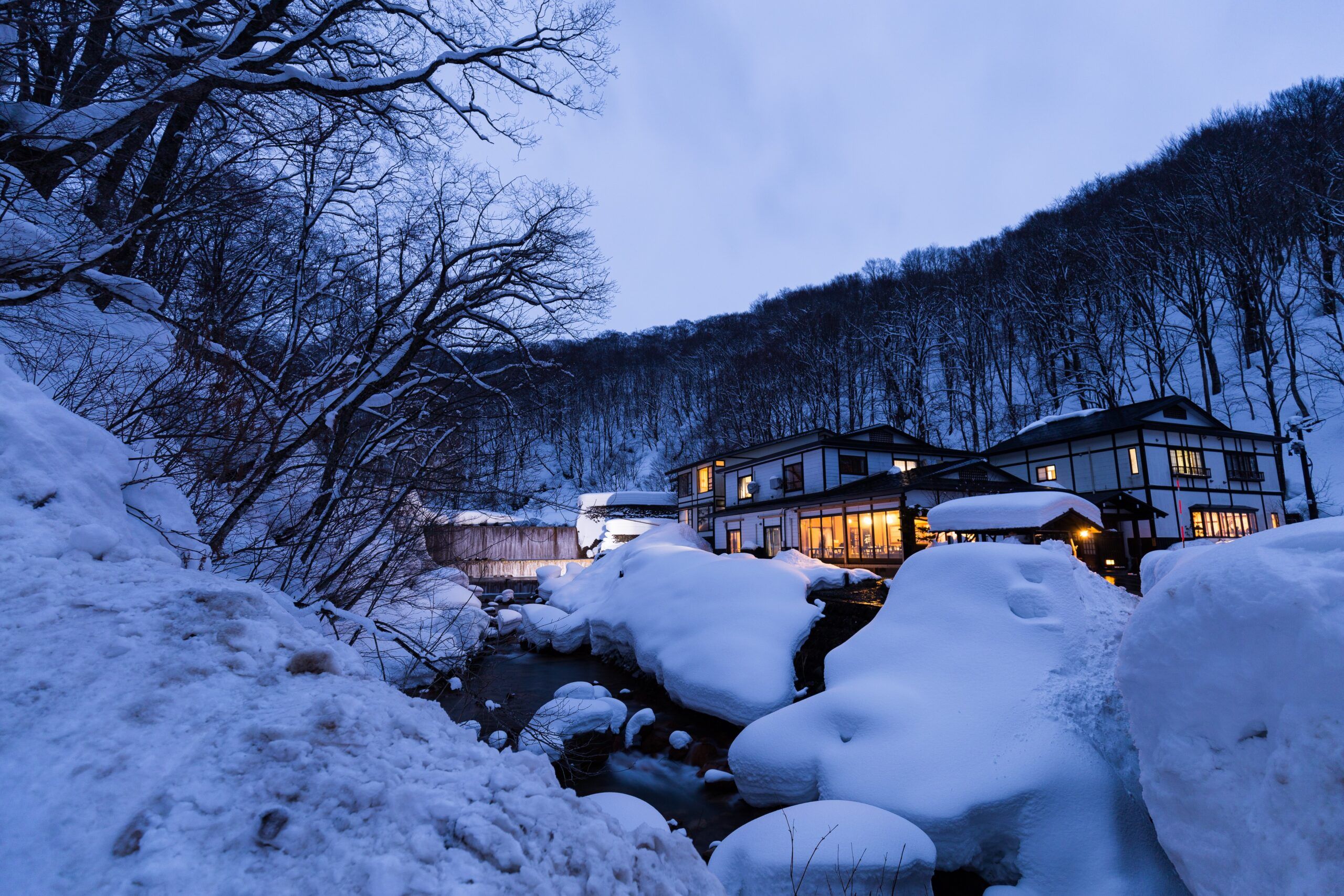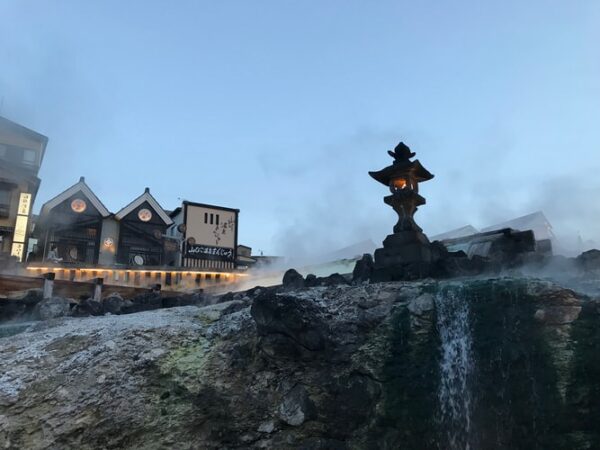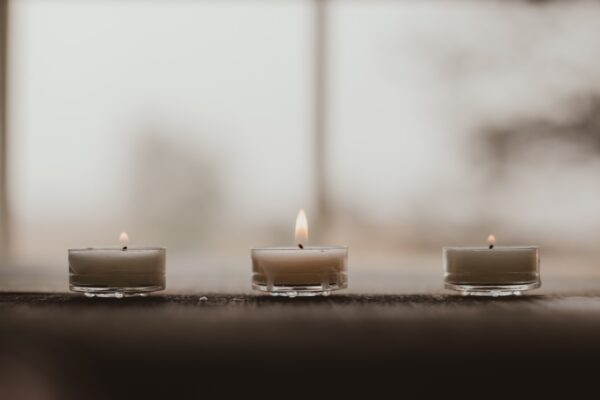
What Are The Differences Between Sento And Onsen
Japan is home to more than 8,000 public bathhouses (sento) and 3,000 hot springs (onsens). Many hot springs have a rotenburo or outdoor bath that allows guests to enjoy the picturesque views of the landscape.
While both options are publicly available, several things differentiate the two from each other. So in this article, we’re going to learn more about the Japanese onsens and sentos and how we can tell them apart.

Japanese Onsen vs Sento
The main difference between onsens and sentos is that the latter is a man-made bath, while onsens refer to hot springs that are naturally available around Japan. Onsens are usually found near the country’s volcanic areas. Let’s take a closer look at the onsens and sentos in Japan.
Onsen
Onsens are naturally occurring hot baths packed with minerals. The water in the onsen should be at least 25⁰C and contain 19 minerals as well as sulfur, fluorine ion, and hydrogen ion. These requirements ensure that the hot spring can provide the nutrients and warmth that they’re known for. Some onsens can be enjoyed through a traditional Japanese inn or ryokan.
Inns often have zen gardens that symbolize the Wabi-Sabi Japanese principle. They also provide guests with a yukata and Japanese-style rooms with tatami mats and futons. There are a lot of regions in Japan where you can find onsens. Most of these hot springs can be found in the regions of Tōhoku, Kyūshū, Hokkaidō, and Chūbu.
Hakone is the most popular onsen region. Hot spring facilities usually offer a wide range of services such as hot stone spas, hair salons, massages, and relaxation areas. Day onsens are a good option for those who want to experience Japan’s bathing culture on a budget. Since day onsens are dedicated facilities, the bathing area is generally larger and better than at Japanese inns.
Sento
Sento, also known as furoya and Yuya, is a public bathhouse. These facilities grew in number after the war. Many facilities visited local sentos because not all houses had bathtubs during that time. During the mid-1960s, there were 20,000+ public bathhouses throughout Japan. Today, there are less than 10,000 public bathhouses in the country. But you will still find a lot of sentos in residential areas.
The bath area in sentos is tiled and near the entrance, you will find a supply of buckets and small stools. There are also washing stations with a showerhead and 2 faucets. One of the faucets is for cold water, while the other one is for hot water. There are usually 2 or 3 bathtubs with varying water temperatures. Some sentos have a denki buro or electric bath.
Some facilities offer more services than the regular sento. These facilities are called super sento and they offer different saunas, bathtubs, and places where you can eat meals or relax outside the bathing area.
Benefits of Onsen and Sento
Visiting an onsen or sento has many health benefits. Onsens offer balneotherapy or hot spring healing. The Japanese call it Toji. There are various kinds of rest that you can obtain from onsens and sentos – rest for recreation, health, and medical treatment.
You can visit onsens to recover from fatigue, prevent ailments and stay healthy or recover from illnesses. The warmth of onsens also invigorates the cardiopulmonary functions.

The minerals in hot springs have chemical effects that can benefit the body. A relaxing setting has psychological effects that refresh the spirit as well. Now that we know the benefits of onsens and sentos, let’s discuss the bathing rules and manners that you should observe when visiting these facilities.
Bathing etiquette in Japan
Sentos require guests to follow certain protocols such as taking a shower or bath to remove sweat and dirt before entering the bathtub or hot spring. Guests must be nude before entering the hot spring or bathtub as well. Moreover, they are not allowed to bring anything into the bath. For example, you can’t bring a towel into the bathtub because it’s considered dirty. You can put it aside, fold it or put it on top of your head.
People who have tattoos are usually prohibited from entering onsens and sentos because tattoos are generally associated with the Yakuza in the country. So it’s a good idea to check the onsen or sento’s policies before proceeding.
After soaking, you have to wipe your whole body with a small towel before returning to the changing room. If you’re bathing in an onsen, you shouldn’t rinse your body because this will reduce the minerals’ beneficial effects on the body. But if you don’t know what to do, just try to imitate what the other guests are doing.
Top onsen and sento places
Some of the most popular onsens in Japan include the Kawaguchiko Onsen, Yufuin Onsen, Hida-Takayama Onsen and Kusatsu Onsen. Hida-Takayama Onsen is known for its old-world charm. If you want to enjoy the picturesque views of Mt. Fuji, Japan’s highest mountain, while bathing in a relaxing onsen, you should visit Kawaguchiko Onsen.
But if you want to visit the best sentos in the country, don’t forget to include Daikokuyu in your must-visit list. Daikokuyu, also called the King of Sento, is located in Sumida and offers different saunas and hot tubs. If you’re looking for something more modern, try to visit Taishoyu.

The western-style public bathhouse can be found in Hokkaido. It was established 90 years ago and offers different kinds of baths, including a jet bath, aroma bath, electric bath, cold bath, deep bath, and shallow bath. But if you prefer a more traditional sento, you should visit Ebisuyu in Ishikawa Prefecture. The Miyazukuri-style building features a tile art of the god of fortune, Ebisu-sama.
Conclusion
You can enjoy hot springs and public bathing houses almost everywhere in the country. However, there are certain rules and manners that you must follow at all times. As long as you follow these rules, you won’t have any problem at all. You will be able to enjoy Japan’s onsen and sento to the fullest.